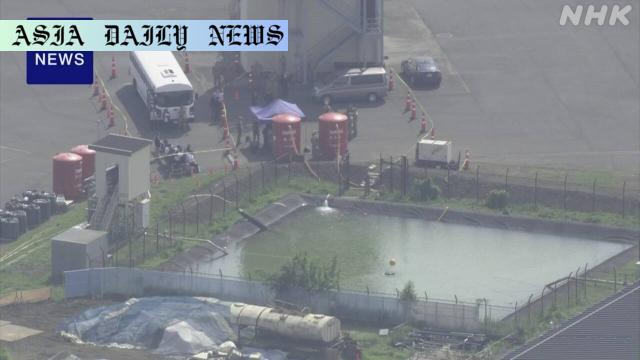PFAS – Japanese officials investigate PFAS leakage concerns at Yokota Air Base, aiming for transparency and public safety.

Background of the Incident
The Japanese government, in collaboration with local authorities, conducted an extensive water quality survey at the Yokota Air Base in western Tokyo after concerns of a PFAS-contaminated water leak. This base, home to significant US military operations in Japan, had been under scrutiny after reports revealed a possible leakage of water containing toxic substances.
PFAS, or per- and polyfluoroalkyl substances, are synthetic chemicals widely used in industrial and consumer products. However, certain PFAS compounds, such as PFOS and PFOA, have been identified as harmful, causing health and environmental concerns. In August of the previous year, it was suspected that PFAS-laden water may have escaped into surrounding areas from deposits maintained at the airbase.
Survey Details and Objectives
On Wednesday, joint efforts between Japan’s Defense Ministry, Tokyo Metropolitan Government, and local municipalities led to the collection of samples from a reservoir located within the airbase. This step was made possible under a clause of the Japan-US Status of Forces Agreement, allowing Japanese officials to address environmental concerns at US bases in the country.
Preliminary data suggests that over 1.5 million liters of water containing PFOS and other related PFAS compounds remain on site. The US military has assured the implementation of decontamination systems to safely eliminate these toxic components. Despite reassurances, local authorities have maintained vigilance, emphasizing thorough analysis and transparency.
Monitoring and Action Steps
The current plan indicates that if the PFAS levels in the sampled water are found to fall below the government’s provisional tap water safety threshold of 50 nanograms per liter, the treated water will be systematically released through drains on the southwestern side of the base. All findings from the current investigation are expected within two weeks.
The Japanese government has also committed to ensuring communities in the surrounding regions are continuously updated, promising detailed and prompt information dissemination about ongoing developments.
Potential Implications and Environmental Concerns
This event at Yokota Air Base sheds light on broader environmental risks associated with military bases and industrial facilities housing hazardous substances. As PFAS materials do not degrade in the environment, they are often referred to as “forever chemicals.” Their persistence can lead to long-term soil and water contamination, posing risks to both ecological systems and human health.
Addressing the contamination at Yokota can serve as a critical case study for managing future PFAS concerns both within Japan and worldwide. The cooperation between US military officials and Japanese authorities will also likely shape public perception of bilateral agreements aiding environmental accountability at shared military installations.
Commentary
The Importance of Monitoring PFAS Contamination
PFAS contamination is a significant issue globally, and its presence at Yokota Air Base raises valid concerns about long-term environmental safety. The recent collaborative action by Japanese authorities and the US military is a step in the right direction, showcasing that transparency and partnership are pivotal in addressing such challenges.
Balancing National Security and Environmental Accountability
The Yokota incident highlights the delicate balance required when dealing with the dual mandate of maintaining strategic military bases while ensuring environmental safety. Bases like Yokota are crucial for international cooperation and security. However, the environmental repercussions stemming from years of operational activity cannot be ignored.
Hope for Effective Regulation
There’s optimism that the lessons learned from this incident will lead to improved regulatory approaches regarding PFAS management. Authorities must collaborate globally to prevent these dangerous substances from leaking into environments and causing irreversible damage. These efforts must also include accessible communication with affected communities to rebuild public trust and assure safety for all stakeholders.


